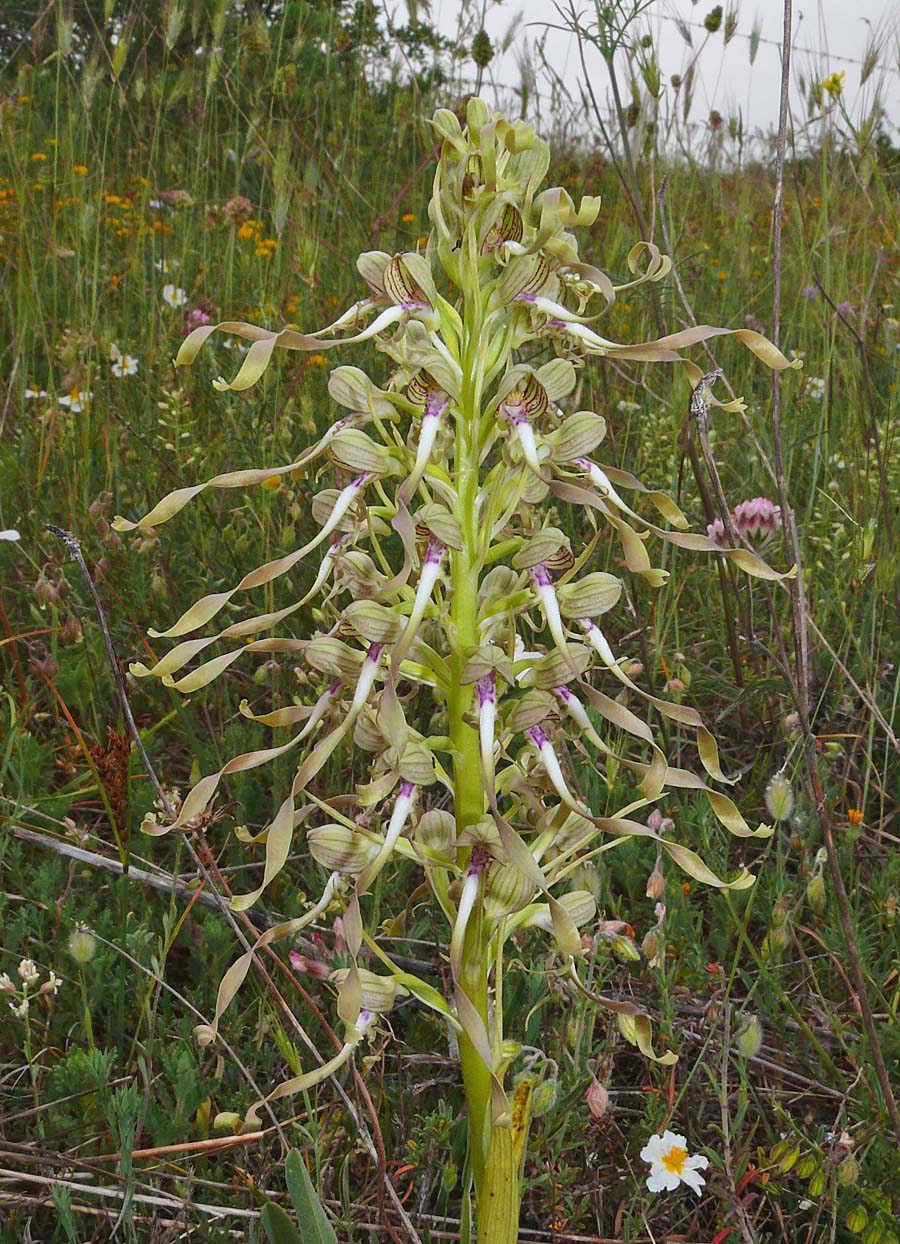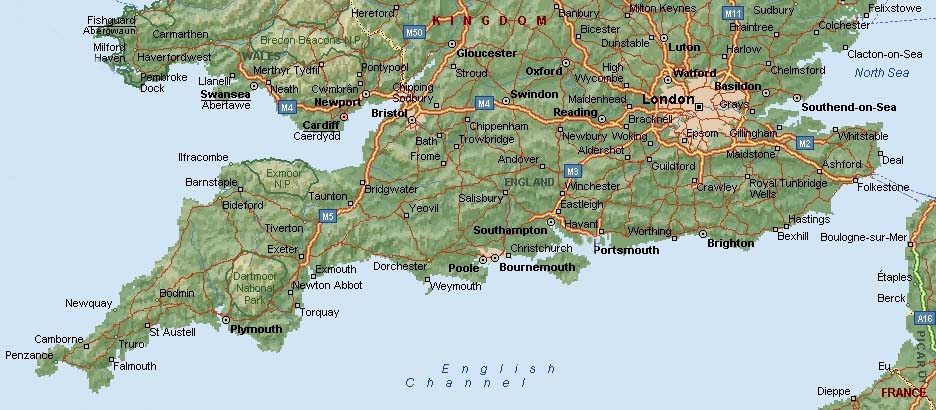
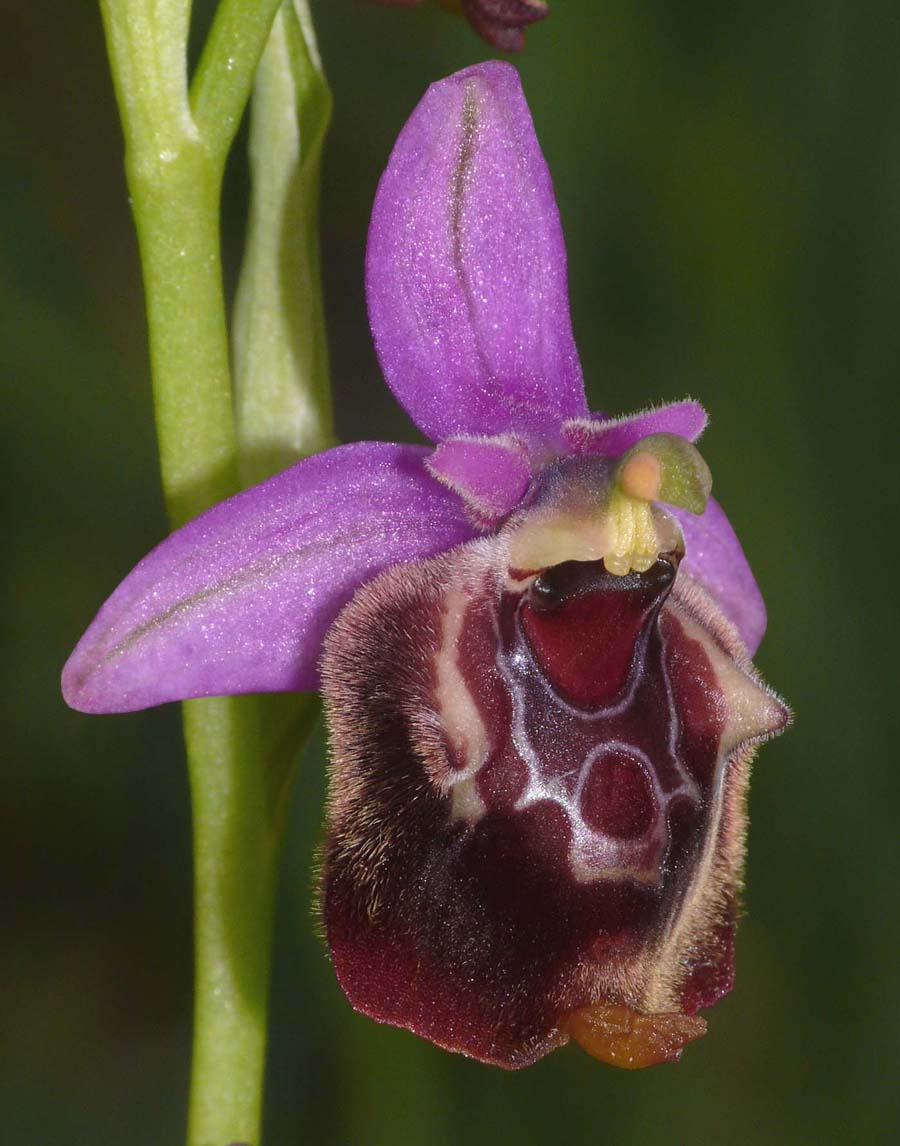
Anacamptis laxiflora
Cephalanthera damasonium
Cphalanthera longifolia
Cephalanthera rubra
Dactylorhiza viridis
Dactylorhiza praetermissa
Dactylorhiza pulchella
Epipactis leptochila
Epipactis phyllanthes
Epipactis purpurea
Hammarbaya paludosa
Herinium monorchis
Himantoglossum hircinum
Neotinea ustulata
Ophrys fuciflora
Ophrys sphegodes
Orchis anthropophora
Orchis militaris
Orchis purpurea
Orchis simia
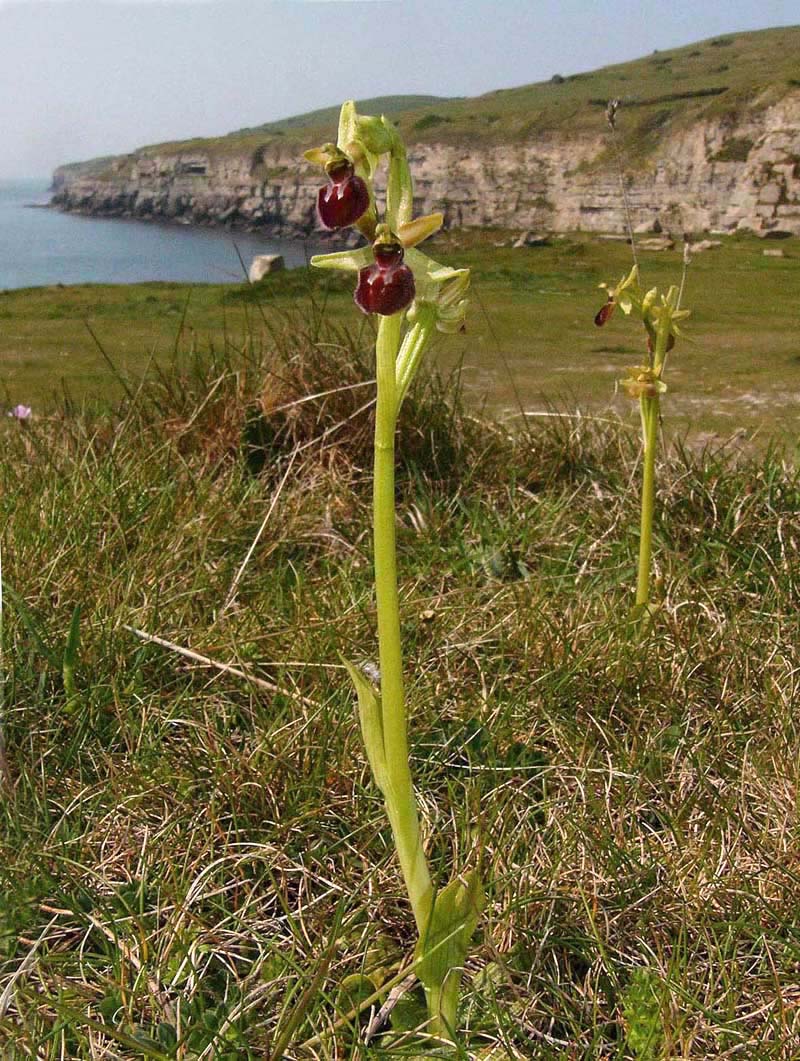
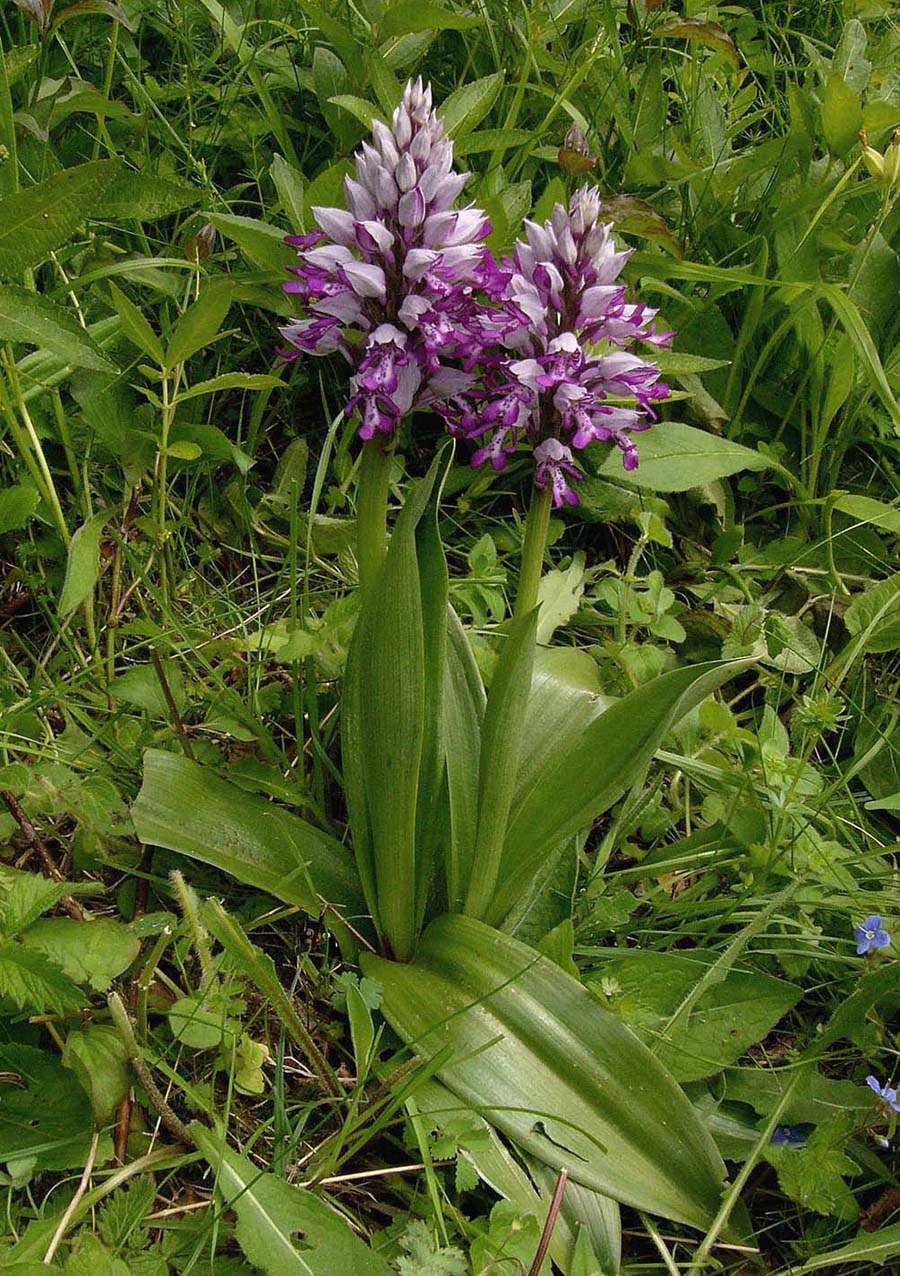
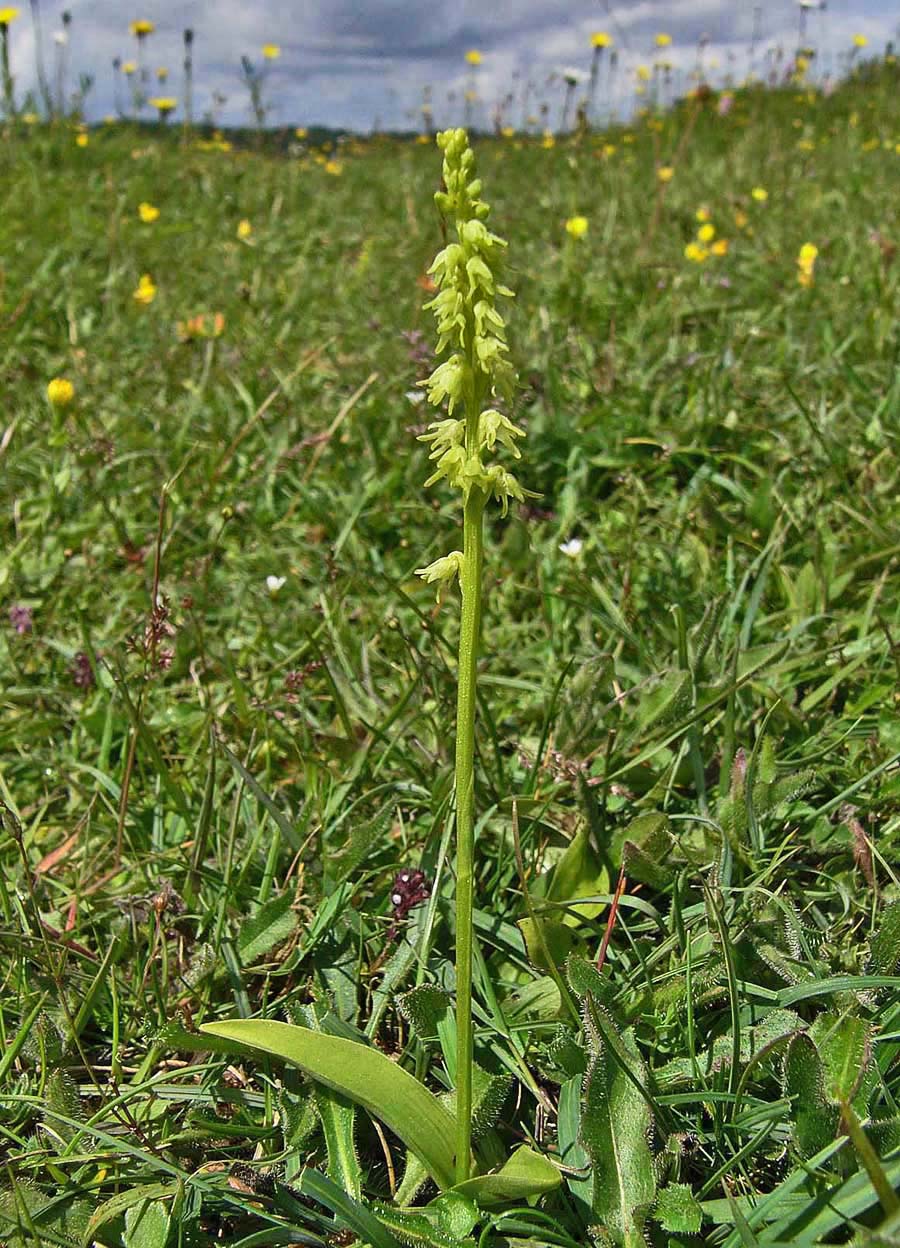
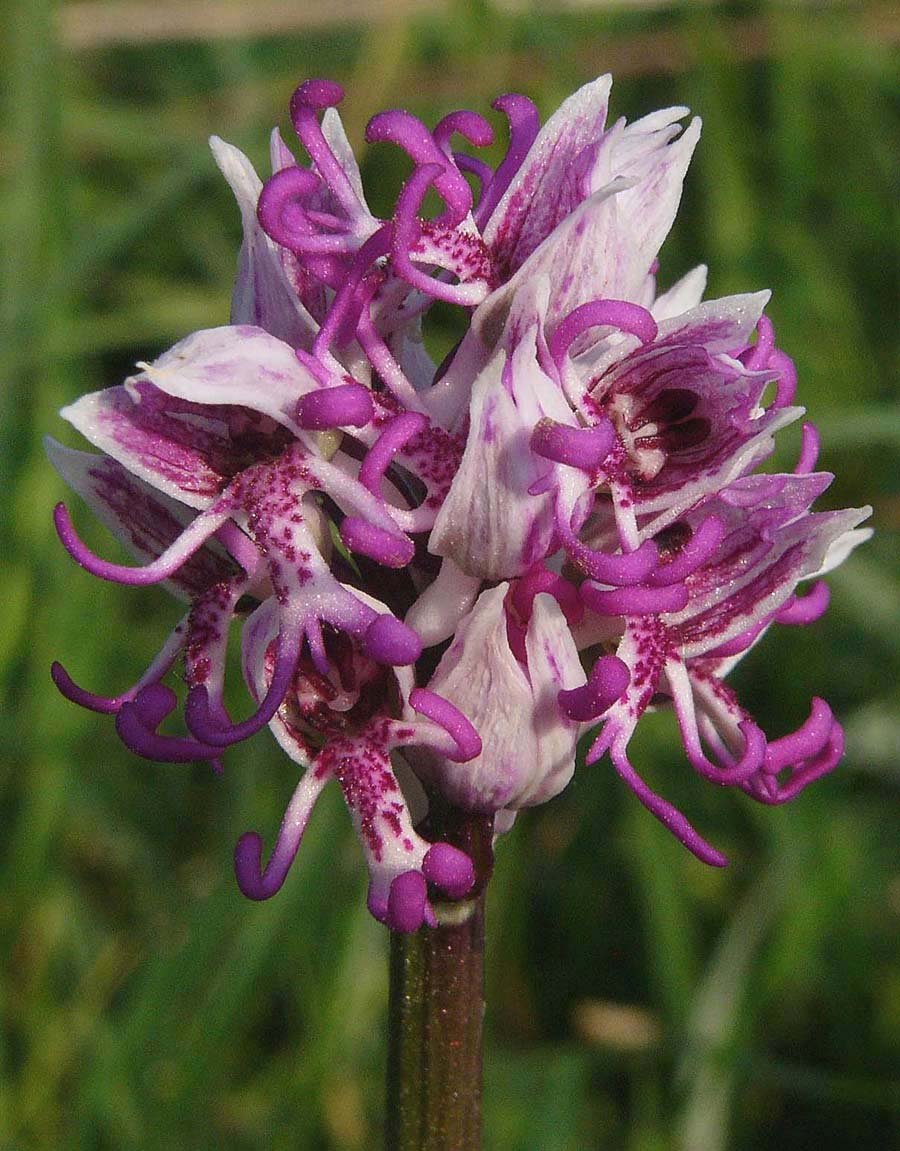
Areas of interest
Southern England has a significantly larger orchid species list than any other equivalent region of Great Britain, despite a generally less varied landscape and greater population pressures. This considerable species list is due in no small part to the extensive tracts of chalk and limestone which stretch in almost unbroken bands from Kent in the east to Somerset in the west. In the west the limestone is less widespread and large areas of acidic heath such as Dartmoor and Exmoor become more prevalent. Dorset possesses and protects some of the finest and last remaining lowland heath in the country.
The far west generally is not orchid rich though the south east coast of Cornwall did once achieve some notoriety as the site of a small colony of Serapias parviflora. They do however seem to have died out which perhaps supports the view that their appearance in Cornwall was not entirely a natural occurrence anyway. Devon has at its core the brooding bulk of Dartmoor, but outcrops of limestone such as Berry Head and Beer Head on the south coast support an interesting flora including several species of orchid. The most noted orchid haven is however on the north coast and this is the vast sand dune system of Braunton Burrows, once the home to Liparis loselii but sadly not recorded here since 1987. The dunes do however offer many Dactylorhiza group species including D. pulchella, very much as across the Bristol Channel in the dunes of South Wales.
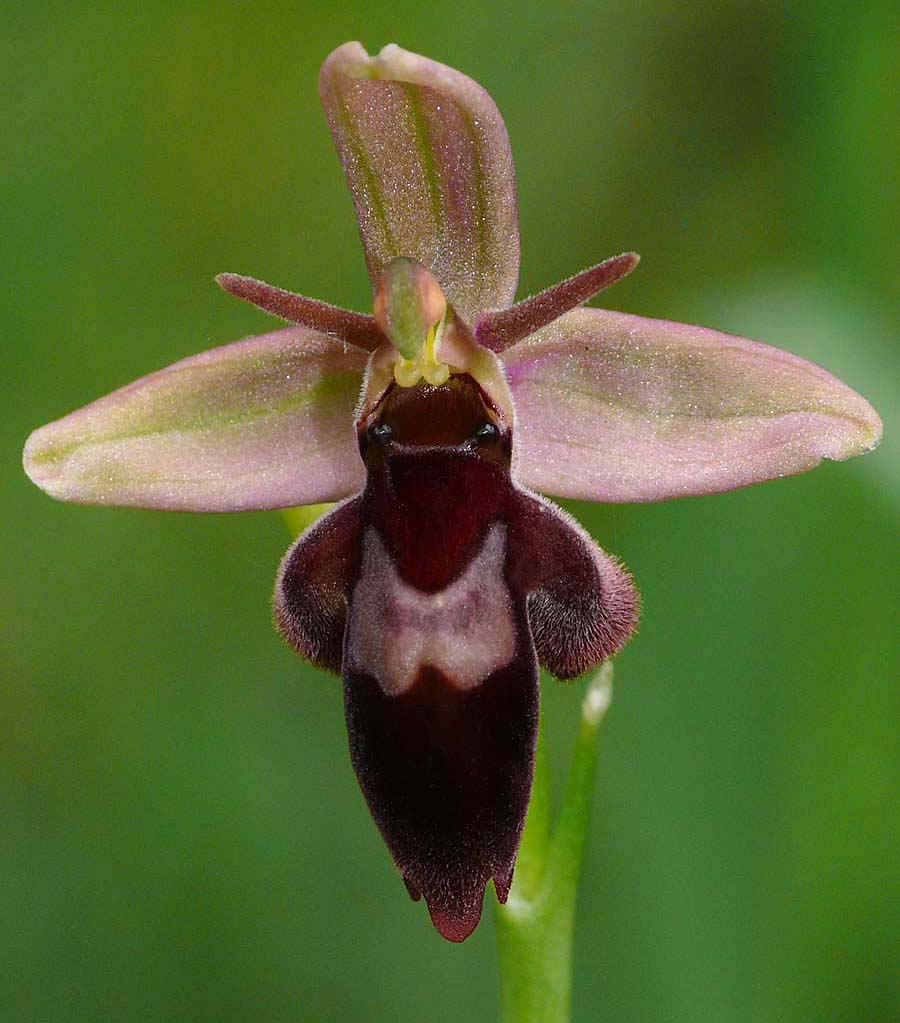
Dorset is the south western boundary of significant alkalinity, where a broad tongue of chalk runs north east through the county as far as Buckinghamshire. A similar belt runs due east and forms the Purbeck Hills along the south coast as far as Old Harry Rocks at Poole. The former region is rich in orchids with a site near Wimborne at Badbury Rings hosting eleven species and the downs around Salisbury (in Wiltshire) home to perhaps the best populations of Neotinea ustulata in the country. The Purbecks boasts one of Great Britains rarities, Ophrys sphegodes which can be found sparingly along the sea cliffs overlooking the English Channel, as depicted in the photograph at the head of this page. The Arne is a large area of lowland heath around Poole Harbour and supports a good range of orchid species including Hammarbaya paludosa, Dactylorhiza pulchella, Dactylorhiza incarnata, Gymnadenia borealis and Epipactis palustris.
The ancient New Forest which lies in both Hampshire and Dorset is another tract of lowland heath which as well as the plants listed above, possesses species which are less acid loving such as Platanthera bifolia, Ophrys apifera, Anacamptis morio and Spiranthes spiralis. Hampshire together with Surrey are both counties with a rich flora, the former being especially noted for Herminium monorchis and Cephalanthera longifolia and the latter Orchis anthropophora.
To the north west of Kent are the Chilterns which take in the counties of Berkshire, south Oxfordshire and south Buckinghamshire. This is another orchid rich region whose species list includes Orchis purpurea (not thought to be naturally occurring), Orchis simia, Epipactis leptochila, Epipactis purpurata and Epipactis phyllanthes. The really special orchid here is however Orchis militaris which can be found at a tiny handful of sites where it is heavily protected. Thought to be extinct in Great Britain it was happily rediscovered in 1947 and has been the subject of intensive nurture and study ever since.
The broad leaved woodland of the Buckinghamshire Chilterns were of course the last known site of the elusive Ghost Orchid (Epipogium aphyllum) before it was formally declared extinct in 2005. As with Military Orchid, the species has now been rediscovered, albeit in Herefordshire and its to be hoped that one day this enigmatic little orchid can be seen again in this part of Southern England.
Although as Crown Dependencies they are not officially part of England at all, the Channel Islands do contribute a further species that cannot be found in the UK proper and that is Anacamptis laxiflora, otherwise known as the Jersey Lilly !
